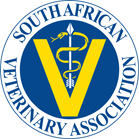Original Research
Antebrachial chondrodysplasia in New Zealand white rabbits (Oryctolagus cuniculus)
Journal of the South African Veterinary Association | Vol 82, No 3 | a56 |
DOI: https://doi.org/10.4102/jsava.v82i3.56
| © 2011 T. Pulker, A. Carstens, J. Williams
| This work is licensed under CC Attribution 4.0
Submitted: 11 April 2011 | Published: 13 April 2011
Submitted: 11 April 2011 | Published: 13 April 2011
About the author(s)
T. Pulker, University of Pretoria Biomedical Research Centre, Private Bag X04, Onderstepoort, 0110 South Africa., South AfricaA. Carstens, Department of Companion Animal Clinical Studies, Faculty of Veterinary Science, University of Pretoria, Private Bag X04, Onderstepoort, 0110 South Africa., South Africa
J. Williams, Department of Paraclinical Sciences, Faculty of Veterinary Science, Private Bag X04, Onderstepoort, 0110 South Africa., South Africa
Full Text:
PDF (346KB)Abstract
Rabbits obtained from a South African rabbit breeder exhibited deformities of the distal forelimbs. The clinical, radiological and histological presentation of mid-antebrachial valgus formation (a.k.a distal foreleg curvature) in these rabbits was consistent with an autosomal recessive trait associated with a chondrodystrophic lesion of the distal ulna epiphysis 1st described in the 1960s. The impact this might have on South African farming enterprises and laboratory facilities has not been established, but the heritability and welfare implications of this condition make it a concern. Mildly affected animals can adapt to the deformity with some housing adjustments, but severely affected animalsmayrequirehumaneeuthanasia.
Keywords
No related keywords in the metadata.
Metrics
Total abstract views: 3356Total article views: 2666
